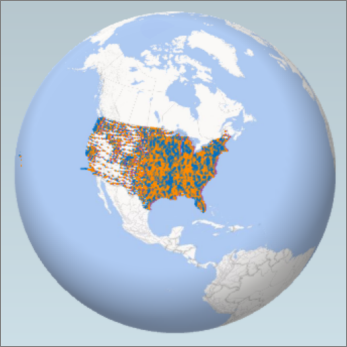Microsoft Excel is the most commonly used tool to create basic graphics, including color-coded data values, charts, indicators, and interactive slicers and timelines. It also features calculation, graphing tools, pivot tables, and a macro programming language called Visual Basic for Applications. All editions of Excel support data visualization through charts, data bars, sparklines, and conditional formatting. These can be used when creating graphical representations.
Pivot Tables and Pivot Charts are a common way to aggregate data values across multiple dimensions, and enable users to see the relationships between these dimensions.
Power Map is an Excel add-in for Microsoft Office 365 Power BI subscribers that enables you to visualize geographic and temporal analytical data on a map. With Power Map you can display geographically related values on an interactive map, and create a virtual tour that shows the data in 3D.
